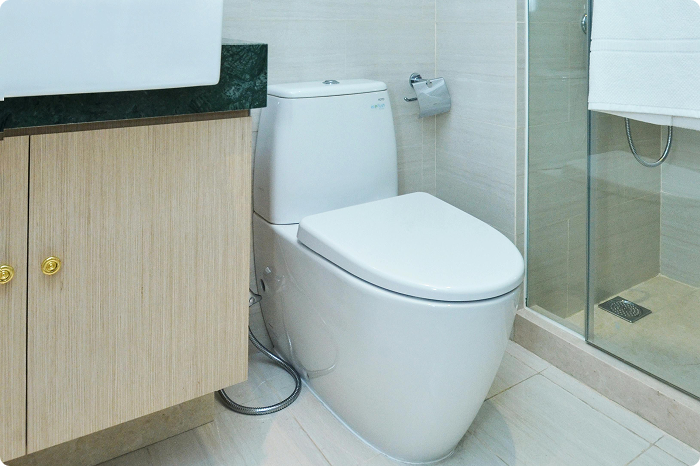Stop the Leak! The Ultimate Guide to Fixing a Running Toilet
By Kurt Woodard · Jul 25, 2025

A running toilet can be more than just an annoying noise; it's often a signal of underlying issues that could lead to significant water wastage. Imagine the gallons of water, and consequently, the dollars, going down the drain—literally—while you're oblivious. The good news is that dealing with a running toilet is often straightforward and doesn’t always require professional assistance. In this comprehensive guide, we will explore why your toilet is running and provide detailed steps on how to fix a running toilet. From the common culprit—the toilet flapper replacement—to other potential issues, we’ll cover everything you need to know. Understanding these basics will not only save you money but also contribute to environmental conservation by reducing water wastage from a running toilet. If at any point you feel out of your depth, remember you can always consult HouzTask AI for expert advice or find a trusted professional.
Understanding a Running Toilet
Why is My Toilet Running?
Knowing why your toilet is running is the first step to fixing the problem. Here are some of the most common reasons:
- Worn-out Toilet Flapper: The rubber flapper can degrade over time, allowing water to leak from the tank into the bowl.
- Float Issues: If the float is set too high or too low, it can cause continuous water flow.
- Chain Problems: If the chain connecting the flapper to the flush handle is too short or tangled, it might prevent the flapper from sealing properly.
- Faulty Fill Valve: A malfunctioning fill valve can cause the toilet to continuously fill, leading to overflow.
How to Fix a Running Toilet
DIY Methods
1. Inspect and Replace the Toilet Flapper
The most common fix for a running toilet involves toilet flapper replacement. Here’s how you can do it:
- Shut off the Water Supply: Locate the water supply valve behind the toilet and turn it clockwise to shut off the water.
- Remove the Old Flapper: Open the toilet tank and disconnect the flapper from the chain and the overflow tube.
- Install the New Flapper: Attach the new flapper to the overflow tube and connect the chain to the flush handle lever.
- Test for Leaks: Turn the water supply back on and test the flush. Make sure the flapper seals properly.
2. Adjust the Float
If the float is set too high or too low, you can adjust it to ensure the right water level:
- Locate the Float: The float can either be a ball or cup type, usually connected to the fill valve.
- Adjust the Float: Use a screwdriver to adjust the float height according to the water level indicators on the tank.
- Test the Flush: Flush the toilet to see if the adjustments resolve the issue.
3. Check the Chain
A tangled or too-tight chain can prevent the flapper from sealing properly:
- Inspect the Chain: Ensure the chain has just enough slack to allow the flapper to close completely.
- Adjust the Chain Length: Reposition the chain link to provide adequate slack.
4. Examine the Fill Valve If other fixes haven't worked, the fill valve might be the issue:
- Inspect the Fill Valve: Check for wear and tear.
- Replace the Fill Valve: Turn off the water supply, drain the tank, and replace the fill valve as per manufacturer instructions.
- Test the Flush: Turn the water back on and test the toilet.
Preventing Water Wastage
The Impact of a Running Toilet
A running toilet can waste up to 200 gallons of water per day. Here’s how to mitigate this:
- Regular Inspections: Regularly inspect your toilet for leaks and fix any issues promptly.
- Upgrade Components: Consider upgrading to high-efficiency components.
- Install Alarms: Use water leak alarms to get alerts on potential leaks or running water.
When to Call a Plumber
Persistent Issues
If you've tried all the above DIY methods and your toilet is still running, it’s time to call a professional.
Complicated Repairs
Some issues may require specialized tools or expertise beyond DIY fixes.
Time Constraints
If repairing a toilet isn't something you have time for, hiring a plumber can save you time and potential frustration.
How to Find a Plumber for a Running Toilet
Research and Recommendations
- Ask for Recommendations: Seek referrals from friends, family, or neighbors.
- Read Reviews: Look up reviews on HouzTask and other trusted platforms to read about others' experiences.
Licensing and Insurance
Always ensure the plumber is licensed and insured to reduce risk.
Obtain Multiple Quotes
Get quotes from at least three different plumbers to compare prices and services.
Emergency Services
Look for plumbers who offer emergency services for urgent fixes.
Conclusion
Addressing a running toilet is crucial for saving water and money while also preventing potential damage to your home. By understanding why your toilet is running and following the steps on how to fix a running toilet, you can efficiently handle most minor issues on your own. But when in doubt, it's always best to consult a professional. Remember, timely intervention is key to preventing excessive water wastage from a running toilet. If you need further advice or wish to find qualified professionals, you can always rely on HouzTask AI to guide you or find the best experts in your area.Find a pro
Need help?
Let HouzTask help you diagnose the issue or connect with a trusted local pro — in minutes.
Get Started with HouzTask